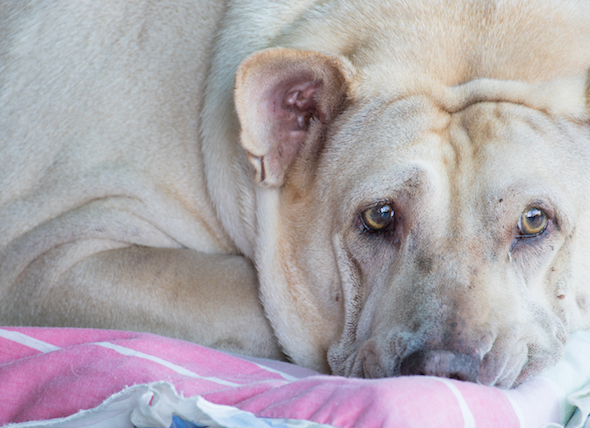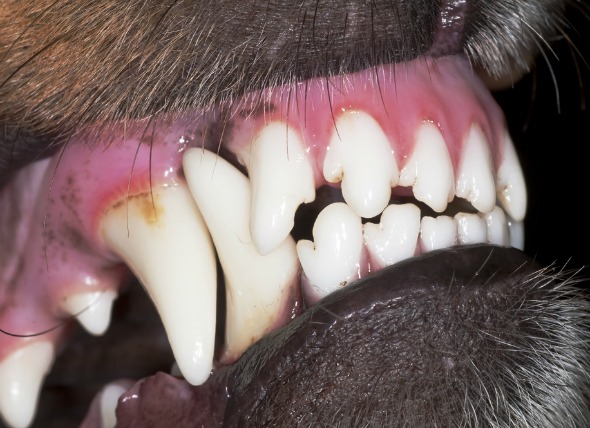

Degenerative myelopathy is the general medical term that refers to the disease of the dog's spinal cord or bone marrow. The condition does not have specific cause and may remain unidentified. While the disease can affect any breed and any age of dog, older animals are most often afflicted with the disease. Prognosis of this disease is not positive, as it is the degeneration of the animal's spinal cord, leading to loss of numerous bodily functions.
This disease affects the central nervous system of the dog and can progress to affect the cervical and lumbar portions of the spinal cord in later stages. Lesions are often present on the spinal cord. Neurons in the brain stem may also be affected by the disease. Here are some common signs of this disease:
The cause for degenerative myelopathy is unknown. Although there does appear to be a genetic link, there is no clear evidence to support the presence of a genetic mutation and the probability of the disease affecting a dog. In some genetic studies that are underway, German Shepherds, Pembroke and Cardigan Welsh Corgi's, Chesapeake Bay Retrievers, Irish Setters, Boxers, Collies, Rhodesian Ridgebacks, and Poodles have shown an increased prevalence for the disease.
Initial lab tests are commonly used to rule out a variety of underlying diseases, including a culture and thyroid function test. Imaging is often performed to view potential spinal cord damage. Magnetic resonance imaging (MRI) and computed tomography (CT) can be used to look at various compressions and diseases that are possible within the spinal cord, such as a herniated disk, which can be treated. Also, spinal cord fluid can be examined for an inflammatory disease in the spinal cord. There are several different diagnoses that are possible, including:
Supportive care is the only current treatment option. Exercise has shown some promise at delaying the atrophy of the spinal cord and other limbs. The animal's diet should be maintained, and weight gain should be avoided to prevent increased pressure to the spine and discomfort for the animal. There are currently no drugs that have been approved for this disease. Overall, the long-term prognosis is poor for animals who have been diagnosed with this disease, since it is degenerative in nature.
Paraplegia typically occurs within six to nine months of the initial diagnosis. Monitoring the condition should be ongoing, with neurological examinations and urine samples taken to treat infections that may come about. As the dog becomes increasingly unable to walk, a comfortable pad and frequent turning is recommended to prevent bed sores. It is also recommended that the dog's hair be kept short so that skin lesions are less likely to develop. Habilitation efforts for the dog can include harnessed carts to encourage independence and mobility for the dog.
There are currently no known preventive measures for this disease.
 Weak Immune System due to Hereditary Disorder in Dogs
Immunodeficiency Disorders in Dogs
The immune sys
Weak Immune System due to Hereditary Disorder in Dogs
Immunodeficiency Disorders in Dogs
The immune sys
 Mast Cell Tumor (Mastocytoma) in Dogs
Connective Tissue Tumors in Dogs
Mast cell
Mast Cell Tumor (Mastocytoma) in Dogs
Connective Tissue Tumors in Dogs
Mast cell
 Tick Paralysis in Dogs
Tick Bite Paralysis in Dogs
Ticks act as carriers
Tick Paralysis in Dogs
Tick Bite Paralysis in Dogs
Ticks act as carriers
 Tooth Fracture in Dogs
Traumatic Tooth Injury in Dogs
Tooth fractures re
Tooth Fracture in Dogs
Traumatic Tooth Injury in Dogs
Tooth fractures re
 Anemia (Methemoglobinemia) in Dogs
Methemoglobinemia in Dogs
The purpose of hemoglob
Anemia (Methemoglobinemia) in Dogs
Methemoglobinemia in Dogs
The purpose of hemoglob
Copyright © 2005-2016 Pet Information All Rights Reserved
Contact us: www162date@outlook.com